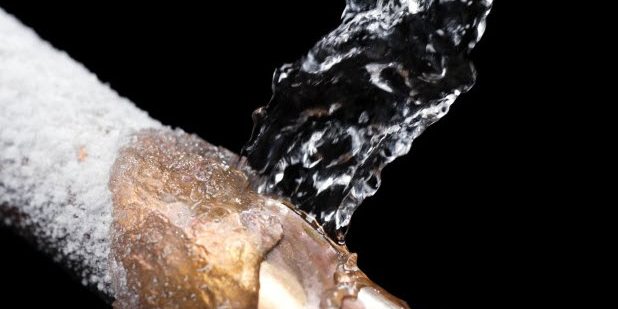
When water freezes, it expands. When the water in your home’s pipes freeze, the expansion creates pressure, which can cause the pipes to crack and break. To learn how to prevent pipes from freezing, it’s best to start with determining which pipes are more likely to freeze. Use these tips from the professionals at ServiceMaster to learn how to prevent pipes from freezing, plus information on what to do if your pipes have already frozen this winter.
Pipes that are most likely to freeze
In general, the pipes that typically freeze during winter are the ones exposed to extreme cold. These may include any outdoor water pipes like water sprinkler lines and swimming pool supply lines, as well as water pipes located in unheated areas of the home. Pipes in unheated basements, attics, garages, crawl spaces and even under the kitchen or bathroom sink are at risk for freezing. If your home has pipes that run along exterior walls with insufficient or no insulation, these pipes are also at risk for freezing in winter months.
How to prevent pipes from freezing
Before the cold weather hits, there are several things you can do to reduce your risk of frozen pipes. Follow these steps to help prevent the pipes in your home from freezing:
- Have your attic, basement and crawl space inspected to ensure they are adequately insulated.
- Seal any leaks in the attic, basement or crawl space.
- Seal leaking windows and any areas of the attached garage that have cold air leakage issues.
- Wrap pipes at risk for freezing with heat tape. Be sure to follow the manufacturer’s recommendations and only use products approved by an independent testing facility. You can also use heat sleeves to help insulate your pipes during cold-weather months.
- Detach any garden hoses from outside faucets connected to the home. Shut off and drain the water from any pipes that lead to outside faucets if you don’t plan on using them during the winter season.
- Insulate large areas with sheets of foam board. These work well in crawl spaces, garages and other areas that need temporary insulation.
What to do with your pipes when winter arrives
Once the temperatures drop, you’ll need to take additional action to help prevent your pipes from freezing. Follow these steps to prevent frozen pipes this winter:
- Maintain a consistent thermostat setting. The American Red Cross recommends keeping your thermostat set to the same temperature all day and night to help maintain a consistent heat level and reduce the risk of freezing pipes.
- Do not set your thermostat lower than 55 degrees Fahrenheit during the winter.
- Keep garage doors closed when not in use, especially if there are any water lines in the garage or on walls adjacent to the garage.
- Let cold water drip from faucets served by exposed lines. The American Red Cross says that even the smallest trickle can help prevent these pipes from freezing.
- On extremely cold days, leave the cabinet doors near kitchen and bathroom sinks open. That way, warm air has a chance to circulate around the pipe.
What to do if your pipes freeze
If you suspect that a pipe is frozen but hasn’t cracked yet, you may be able to thaw it out before extensive water damage from busted pipes occurs. Try using a hair dryer to thaw out the pipe.
In the event that your frozen pipes do crack, you may be at risk of pipe bursts, which could result in leaks or floods. To help minimize water damage, turn off your water at the main shutoff valve and call the professionals right away at 989-423-1311. Our water damage restoration services can work fast to mitigate additional damage. With the proper knowledge, expertise and tools, our team will extract, dry and complete the clean-up, helping you get back on your feet as quickly as possible.

